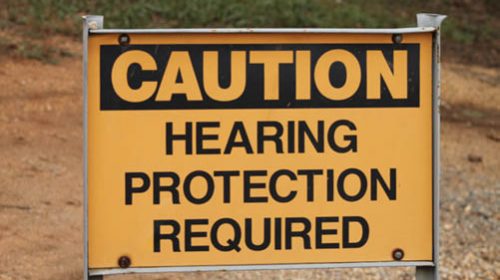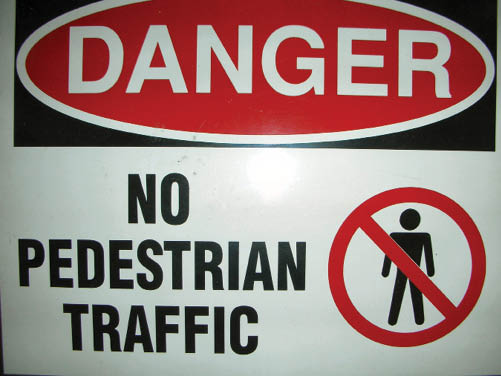Improving Worker Safety Through Soft Skill Development.
By Joe McGuire, Emily Haas and Lucas Simpson

When it comes to workplace communication those in the health, safety and environmental professions tend to focus on compliance [1]. Relatedly, hard skills are often emphasized during trainings to promote compliance.
Specifically, a cursory review of Mine Safety and Health Administration (MSHA) annual refresher training (ART) content demonstrates that almost all training provided to frontline miners, including aggregates workers, focuses on learning or developing hard skills on safety, equipment operation, or job processes. Consequently, it is easy to overlook the importance of how health and safety issues are communicated.
Understanding first, how workers communicate with each other and their supervisors about potential hazards and then second, how coworkers respond to such feedback, deserves more attention in high hazard industries. Understanding communication preferences and perceptions is important to enable productivity and enhance safety, especially with five generations, from Generation Z to Baby Boomers, now working together. For example, previous research has found that Baby Boomers and Generation Z prefer face-to-face conversations while Millennials are more likely to prefer texts or short emails [2].
With such gaps in preferences and experience in on-the-job communication, the value of soft skill development via ART and other educational mechanisms is critical to facilitate teamwork. Employers agree that soft skill competencies in the workplace are just as important as those hard skill competencies; however, most training programs and higher education courses primarily instruct on the development of hard skills [3].
Although students and workers are trained to become experts in certain hard skills, the lack of formal education and emphasis on soft skills is lacking [4]. Besides communication, collaboration and critical thinking are among other soft skills that can help workers excel in the workplace [4].
Although soft skills are harder to teach and practice, they are needed to help workers interact with others as a part of their safe execution of job tasks. The mining industry is no different than others in that, most jobs require workers to operate together and communicate as a team to accomplish a job.
To that end, this article is a complement to a recently published article in Rock Products [5] that discussed the value of considering and updating health and safety training format and delivery processes.This article further extends and discusses the importance of and advantages to focusing on soft skill development for workers during such trainings and concludes with one example of how to start fostering these skills among workers to improve safety, morale, and productivity.
Supporting Soft Skills
Emphasizing worker communication has repeatedly emerged as a gap in health and safety management [6]. Especially at surface mining operations, where workers are spread out across a workplace, communication gaps have been identified as a safety risk [6]. Surveys with workers in the public sector have also revealed that ineffective workplace communication is one of the leading causes for people quitting their jobs [7, 8]. These results show the critical role that organizations and their managers have in creating a positive workplace culture that retains employees.
Company leaders can aid communication by “breaking the mold” from the traditional top-down approach to organizational management. Research has shown that when workers are given the autonomy to not only speak up but also to make authoritative decisions, they become more engaged in proactive and compliant health and safety performance [9]. Particularly, miners who reported working in a more autonomous environment perceived their organization’s safety culture to be higher and reported increased levels of proactivity and compliance during their workday.
Follow-up research has shown that engaged employees express greater job satisfaction and proactively identify hazards [10]. Another study found that public companies that are rated high in employee engagement are twice as innovative and approximately 25% more productive than their competition [11]. All of this research has set the foundation for not only valuing but seeking to improve workplace communication.
Developing Soft Skills
Being free to speak up is necessary when it comes to reporting hazardous behaviors and conditions in the workplace. Although most companies tell their workers they should speak up when they see unsafe behaviors or situations, equipping them with the skills to effectively intervene is far less common [1]. Previous articles written by these authors have reviewed and outlined the frequency of when and why 75% of workers do not speak up when they see something unsafe [11-14]. Common reasons provided by miners ranged from “pressure to produce,” or “this is the way we have always done it,” to “fear of retaliation from supervisors and coworkers” [11].
Although these reasons may keep workers from speaking up, a larger barrier comes down to company expectations around proactive communication being poorly defined [8]. This point also aligns with research supported by Caterpillar which has indicated that organizations need to focus on effective training to clearly communicate safety expectations in a way that is positively perceived by employees [1].
Further, Ganschow believes that most companies tell their workers to speak up, but very few organizations educate employees on how have such conversations and even fewer train them on how to receive safety feedback from others in a constructive manner. Consequently, Ganschow indicated that is necessary to train and motivate employees to effectively communicate and respond to mitigate potential issues around workplace hazards [1]. Field research has observed this same barrier [10].
Case Example
Even though 96% of employees, regardless of the industry in which they work, are provided the authority to stop work when they witness unsafe behaviors or conditions, only about 40% intervene or speak up to correct an issue [15]. Mining is a highly interdependent occupation, making the need to communicate and intervene on the job critical [16-17].
The authors of this article sought to develop a new kind of training for miners to focus on building these needed skills. Ten years ago, CRH Americas’ leaders launched an initiative to encourage their employees to speak up when they witness unsafe behaviors or conditions. Called See-Stop-Do, the company believed this initiative could be a catalyst for improving both the safety culture and worker safety performance.
Consequently, on the 10th anniversary of its See-Stop-Do initiative, CRH Americas decided to re-emphasize the importance of speaking up and stopping the work if unsafe behaviors or conditions are observed. To reinforce this topic, all CRH Americas companies supported this initiative by showing a newly developed video that discussed the importance of See-Stop-Do.
However, companies were able to use discretion on how they chose to support See-Stop-Do at their workplaces. Given this flexibility, the leadership at the Ash Grove Cement Plant in Louisville, Neb., opted to implement this message a bit differently by focusing on the actions needed to do something.
They provided four-hour educational training sessions to the workforce that was dedicated to having difficult or crucial conversations with coworkers and supervisors. Ash Grove’s (Louisville) senior leadership felt that providing every worker with the tools and skills needed to speak up would help employees to better understand their role in meeting the company’s See-Stop-Do expectations.
This educational training session included an overview of research documenting why workers do not speak up nor stop the work when they observe risky behaviors or conditions. In addition, workers learned about and practiced how to have difficult or crucial conversations. Using a guidebook, training was delivered by way of small group discussions, writing, reading, supporting videos and brief lectures.
The educational training sessions were facilitated by Joe McGuire, PhD and Lucas Simpson, Ash Grove safety manager. After completing the training, participants were asked to complete a training evaluation. Some of these results are highlighted below.

Evaluation Results
Immediately after the training, participants were asked to evaluate their learning experience using a 10-item survey on a 1-7-point scale. The average rating for each individual item was 6.5, indicating a high level of agreement. When averaging individual responses for each item, almost all workers believed that the training improved their soft skill competencies. For example, 98% of the participants indicated that they learned how to have a crucial conversation both at work and at home.
They were also given the option to give feedback about how they would apply what they learned and what they liked or disliked about the training – to which 186 written comments were provided. When compared to writing comments after previous trainings dealing with mostly hard skill development, it seemingly took participants longer to compose and express their thoughts.
1. The comments were divided into three categories:
2. 75 comments illustrated ways that participants felt they would apply what they learned at work.
3. 76 comments detailed what they liked best about the training.
4. 35 comments dealt with what they disliked about the training. Of these, 22 offered suggestions to improve the class format or training guide and 13 were about the facilities.
Asking participants to reflect on how they would apply what they learned during the training was reassuring. For example, participants wrote statements such as:
- “Try harder to stop the work and start the talk.”
- “Speak up more on safety.”
- “Focus on listening and not being so narcissistic.”
- “Try my best to have those hard conversations.”
- “Get out of my comfort zone and have difficult conversations.”
- “Hopefully resolve more issues with less stress and fighting.”
Based on the previous research cited about workplace communication, if participants carry out some of these statements, it is hoped that worker engagement and safety performance will increase as well.
Trainer Observations
During these individual training sessions, the facilitators observed and learned several things to further guide the development and implementation of future trainings. Some observations to consider include:
- Participants preferred working in small groups. Willingness to share during smaller group discussions and activities, even when members of senior management were present, was noticeable in comparison to past larger group debriefs.
- It takes more time to effectively cover this topic. Providing training on this topic in four hours felt rushed at times due to the high level of participation. Consequently, to cover the material and allow time for practice, a six-hour or two four-hour training sessions might enhance the learning process.
- Workers notice a culture that instills See-Stop-Do as a core value. This value is important to instill regardless of one’s title or position in the hierarchy. Lucas Simpson, an author of this article and Ash Grove manager, indicated that just the number of noteworthy near misses that have been reported on site since this training is a clear metric of success.
- Consider personality traits and life or work experiences. Acknowledging and trying to accommodate for these differences can help bridge the gap in communication styles among generations. For example, there are currently three generations from one family working at the Ash Grove facility. All of them communicate effectively but have different preferences.

Summary
This case example demonstrated that, if given the opportunity, workers and supervisors can learn and benefit from soft skill development. In the current case example, workers, regardless of the job or position they held, were willing learners. For example, one worker said that the training, “Shows that communication is important and gave us the tools to improve on conversations that are hard” while another said it, “Opened my eyes on how to communicate.”
In summary, providing an educational training opportunity that encourages workers to speak up and learn how to communicate is critical in reducing workplace accidents, incidents, and injuries. Moving forward, developing and executing training that provides practice in developing soft skills, as we would for employees to learn hard skills, is critical to begin fostering healthier and safer workplace interactions and outcomes. This case example illustrates the appetite that workers have for such training. The authors intend to take participants’ comments to improve a new iteration of this training, present the training again, and re-evaluate its impact.
Disclaimer: Mention of any company or product does not constitute endorsement by the National Institute for Occupational Safety and Health (NIOSH). In addition, citations to websites external to NIOSH do not constitute NIOSH endorsement of the sponsoring organizations or their programs or products.
Joseph McGuire, Ph.D. is an independent safety and health consultant ([email protected]), Emily J. Haas, Ph.D. is a research health scientist for NIOSH ([email protected]), and Lucas Simpson, B.S. is a safety manager for Ash Grove Cement, a CRH Company ([email protected] ).
References
1. Ganschow, J. (2018). Why constructive feedback is essential to safety culture. Pit & Quarry, June 2018 Issue. Available at: https://www.pitandquarry.com/why-constructive-feedback-is-essential-to-safety-culture/.
2. GetSmarter (2020). The strengths and weaknesses of every generation in your workforce. Published July 02, 2020. Available at: https://www.getsmarter.com/blog/career-advice/know-your-generationals/.
3. Nyholm, N. (2017). 7 soft skills every millennial should have. Alpha Gamma Entrepreneurship, September 20, 2017. Available at: https://www.alphagamma.eu/entrepreneurship/7-soft-skills-every-millennial/.
4. Hamilton, J. (2020). How developing soft skills can help millennials find their dream job. Published February 18, 2020. Available at: https://gentwenty.com/soft-skills/
5. McGuire, J., Haas, E. J., & Simpson, L. (2021). A new approach to conducting required training: An interactive case example in the aggregates industry. Rock Products, March Issue, 35-39.
6. Haas, E. J., Hoebbel, C. L., & Yorio, P. L. (2020). Assessing the impact of safety climate constructs on worker performance in the mining industry. Department of Health and Human Services, Centers for Disease Control and Prevention, National Institute for Occupational Safety and Health, Pittsburgh PA: U.S. DHHS (NIOSH) Publication No. 2020-120, RI 9704.
7. Select Resources (2019). Is Your Employee Retention Slipping Because of Poor Communication? Select Resources; posted May 9, 2019. Available at: https://select-resources.com/is-your-employee-retention-slipping-because-of-poor-communication/.
8. Kilbourne, C. (2008). Four Keys to Effective Safety Communication. EHS Daily Advisor, November Issue. Available at: https://ehsdailyadvisor.blr.com/2008/11/4-keys-to-effective-safety-communication/.
9. Haas E.J., Ryan, M., & Hoebbel, C. L. (2018). Job autonomy and safety climate: Examining associations in the mining industry. Professional Safety, December Issue, 30–34.
10. Haas, E. J., McGuire, J. (2019). Tracking communication as a performance measure: The industry’s health and safety requirements are evolving and new tools are needed. Rock Products, August Issue, 132–134.
11. McGuire, J., Haas, E.J., & Bohm, S. (2018). Only When Employees Feel Supported Will They Step Up and Say or Do Something if They Observe an Unsafe Situation or Behavior. Rock Products, August Issue, 112–115.
12. Haas, E. J., McGuire, J., Hoebbel, C., Bohm, S. (2019). A comparison of supervisor-worker communication in differing work environments. Aggregates Manager, April Issue.
13. McGuire, J., Haas, E. J., & Hattesohl, R. (2020). Employee engagement: Developing and using safety committees at work. Rock Products, January Issue, 32–38.
14. McGuire, J., Haas, E.J., & Ferguson, C. (2019). This is not your father’s MSHA safety training: Reaching a higher level of involvement in an effort to attain new levels of safety on the job. Rock Products, August Issue, 127–131.
15. Genny, J., & Maxfield, D. (2011). Five crucial conversations that drive workplace safety. Professional Safety, August Issue, 24-26. Available at: https://intactix.ca/wp-content/uploads/2014/03/Five-Crucial-Conversations-That-Drive-Workplace-Safety.pdf.
16. Haas E.J., & Yorio, P.L. (2021). Behavioral Safety Compliance in an Interdependent Mining Environment: Supervisor Communication, Procedural Justice, and the Mediating Role of Coworker Communication. International Journal of Occupational Safety and Ergonomics. Doi: 10.1080/10803548.2021.1896140
17. Haas, E. J., Cecala, A. B., & Colinet, J. F. (2019). Comparing the implementation of two dust control technologies from a sociotechnical systems perspective. Mining, Metallurgy & Exploration, 36, 709–727.
